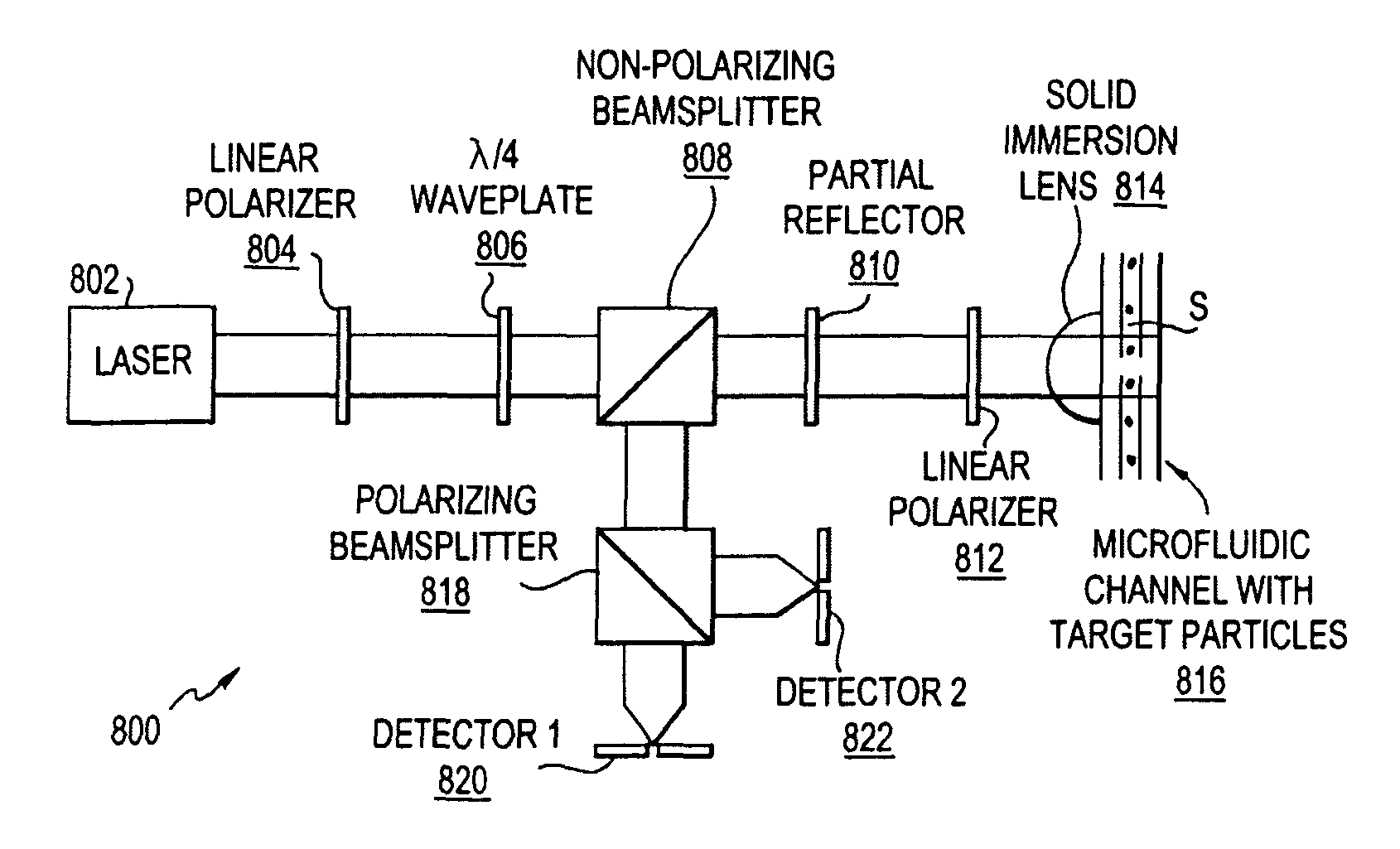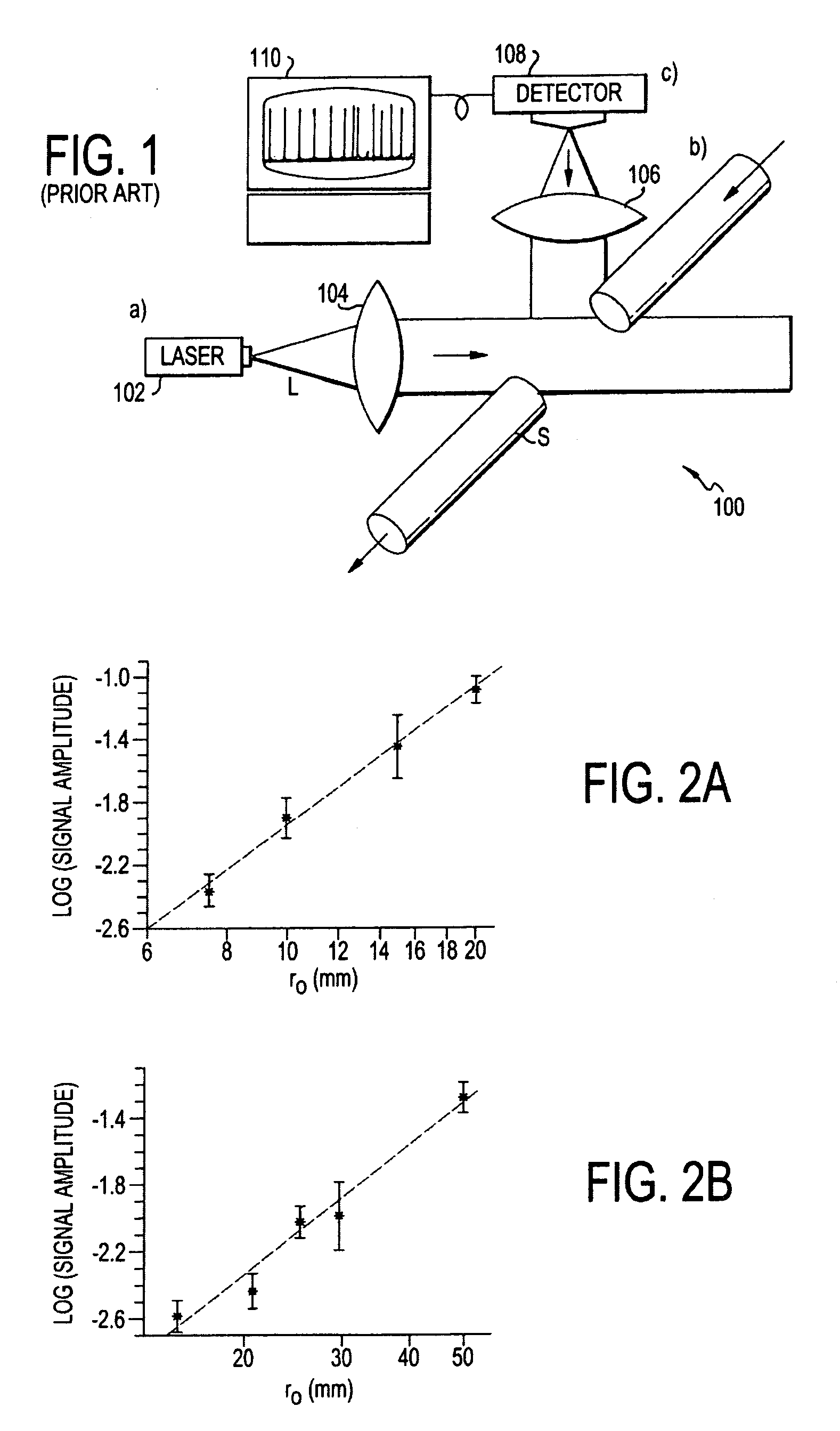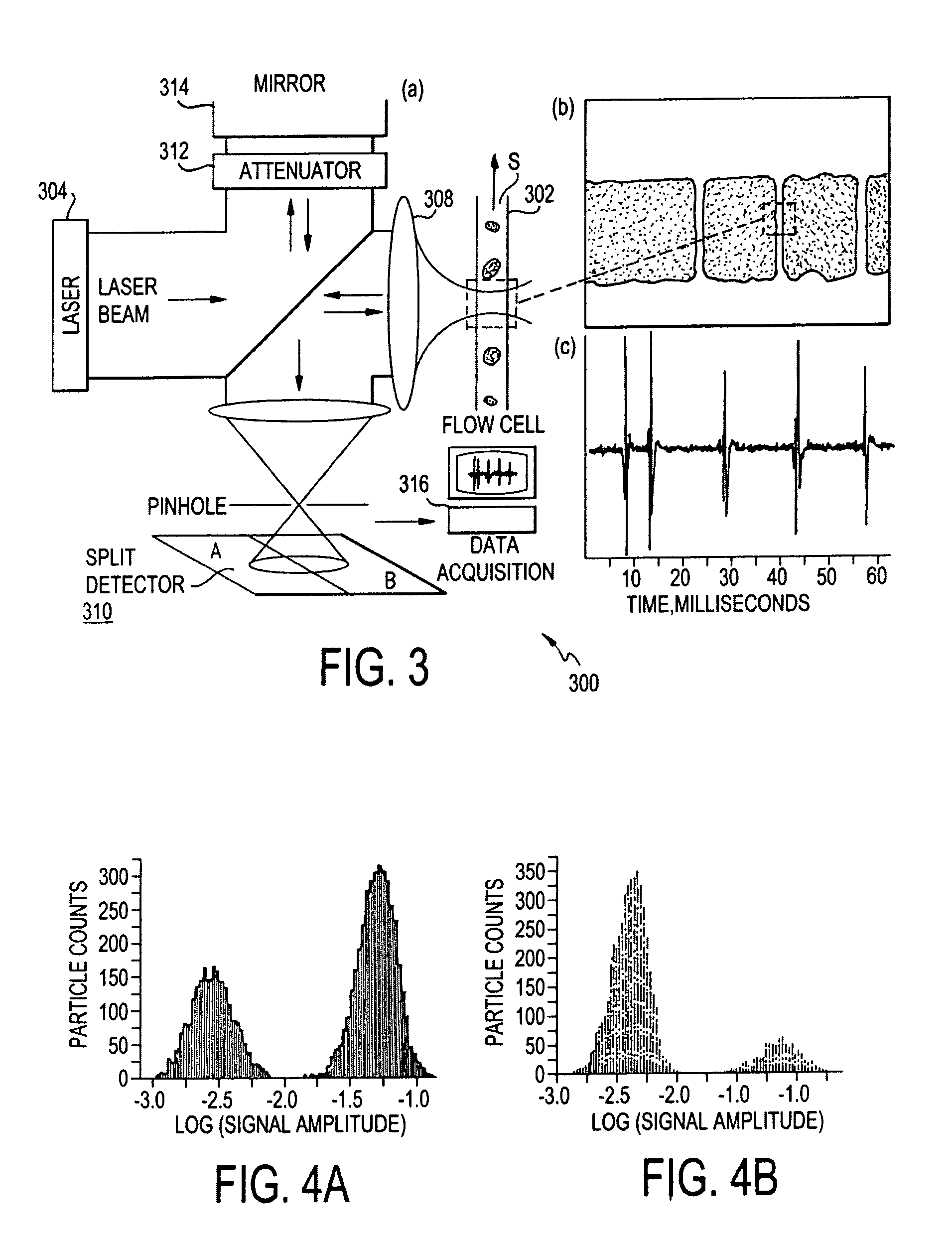Common-path interferometer rendering amplitude and phase of scattered light
a common-path interferometer and scattering light technology, applied in the field of interferometers for nanoparticle detection, can solve the problem that the shift interferometer based on point diffraction does not enable control over the relative intensity of the reference beam, and achieve the effect of improving the ability to distinguish among sample materials and signal-to-noise levels
- Summary
- Abstract
- Description
- Claims
- Application Information
AI Technical Summary
Benefits of technology
Problems solved by technology
Method used
Image
Examples
Embodiment Construction
[0045]A preferred embodiment will be set forth in detail with reference to the drawings, in which like reference numerals refer to like elements or steps throughout.
[0046]Based on the discussion above, to increase the detection sensitivity for nanoscale particles one needs to determine a signal that exhibits a particle size dependence that scales weaker than R6. In our previous work we have laid out two strategies: 1) gradient force detection and 2) interferomeric detection. Both approaches reduce the signal dependence from |α|2 to |α|, thereby making the signal dependent on R3. The gradient force based method monitors the influence of the field gradient ∇E2 of a strongly focused laser beam on the trajectory of a target particle, whereas the interferometric approach measures the field Escatt of the particle's scattered field as opposed to its intensity. The weaker particle size dependence has been verified in both schemes.
[0047]FIGS. 2A and 2B show the measured interferometric parti...
PUM
 Login to View More
Login to View More Abstract
Description
Claims
Application Information
 Login to View More
Login to View More - R&D
- Intellectual Property
- Life Sciences
- Materials
- Tech Scout
- Unparalleled Data Quality
- Higher Quality Content
- 60% Fewer Hallucinations
Browse by: Latest US Patents, China's latest patents, Technical Efficacy Thesaurus, Application Domain, Technology Topic, Popular Technical Reports.
© 2025 PatSnap. All rights reserved.Legal|Privacy policy|Modern Slavery Act Transparency Statement|Sitemap|About US| Contact US: help@patsnap.com



